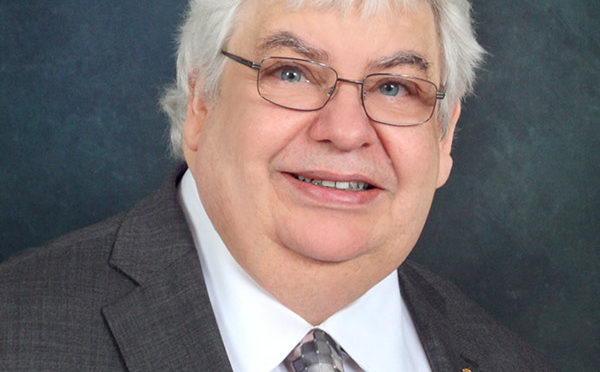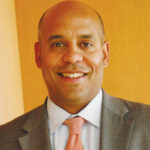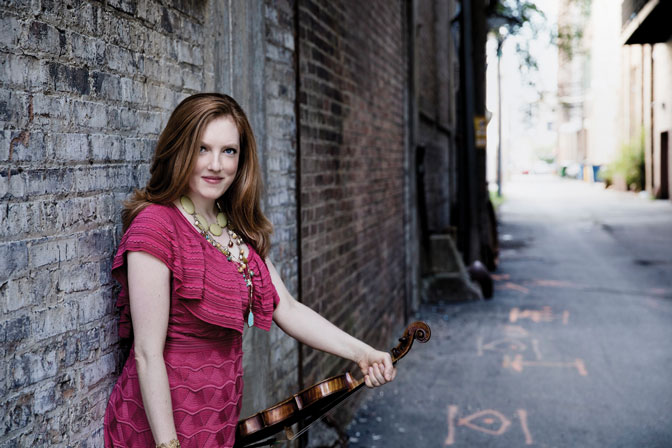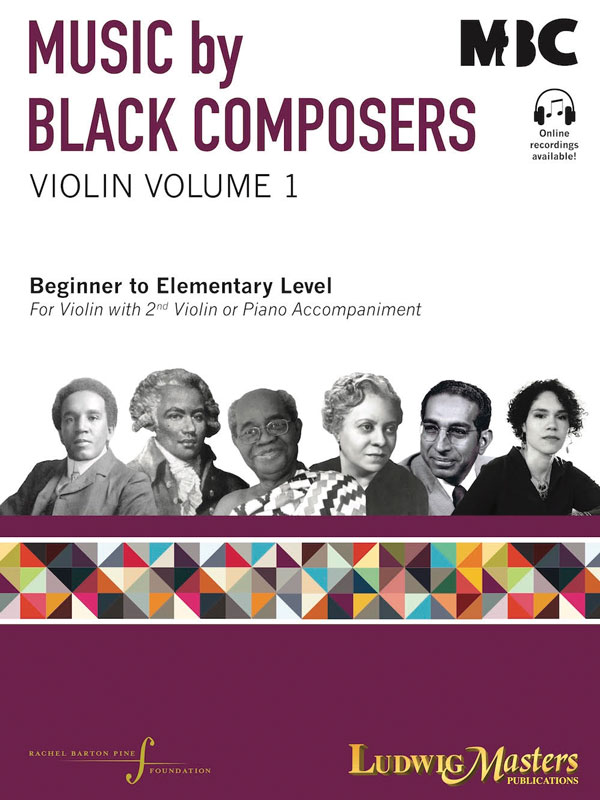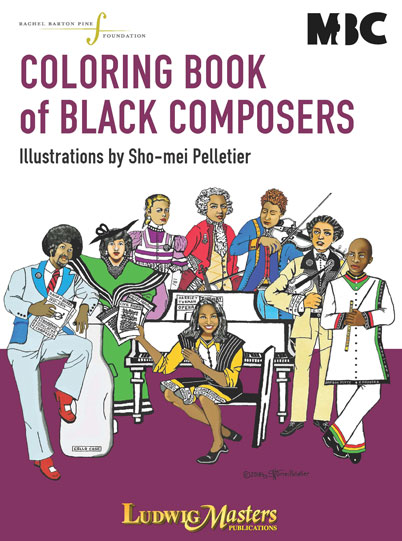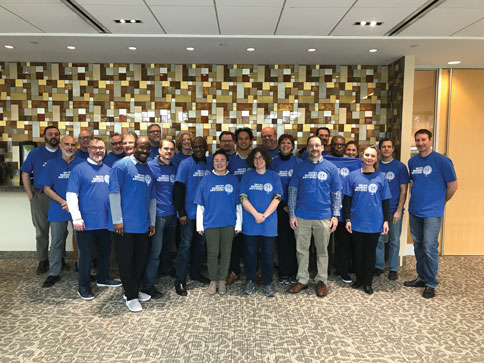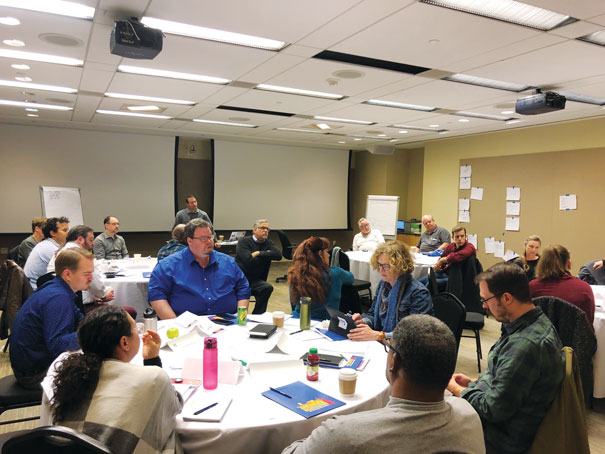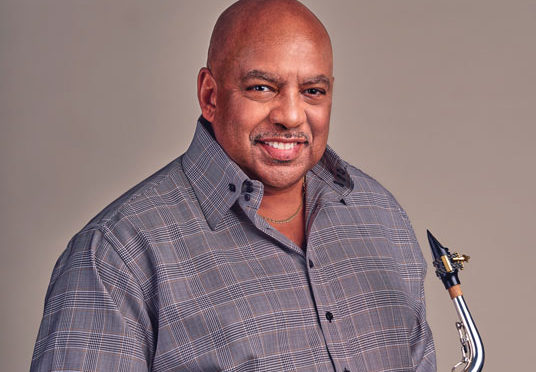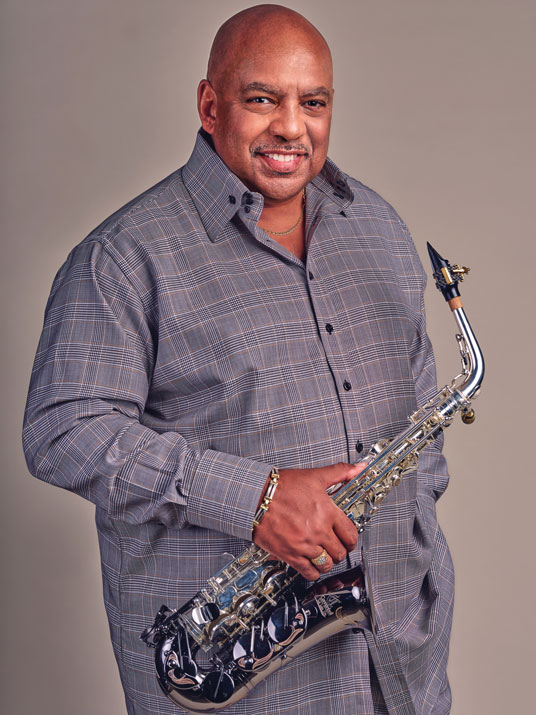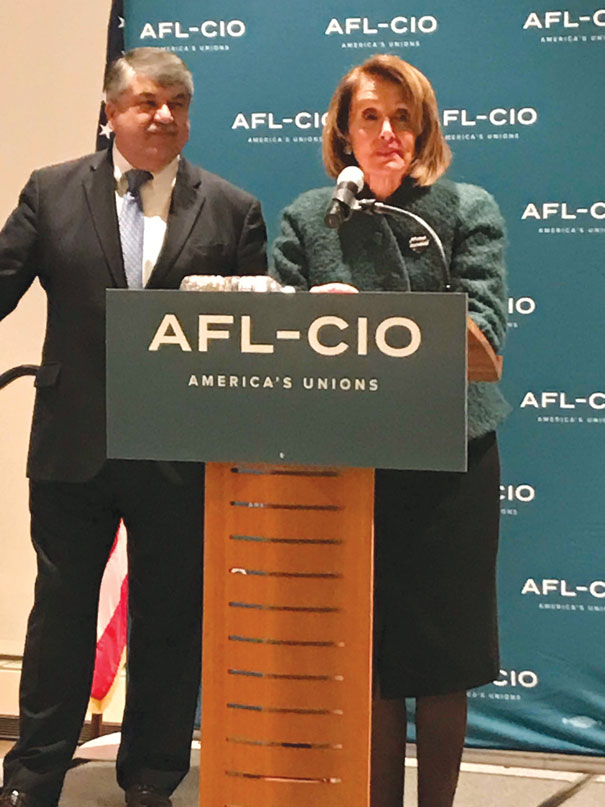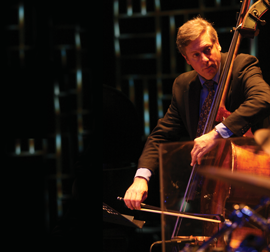
In David Finck’s multi-faceted freelance career he’s had the opportunity to articulate the musical language of a range of artists. A longtime member of Local 802 (New York City), Finck first joined AFM Local 66 (Rochester, NY) while attending Eastman School of Music.
Finck arrived at his affinity for jazz through his father’s extensive collection—Count Basie’s band, Charlie Parker, Dizzy Gillespie, Miles Davis, and Red Garland. Among his influences on bass, which he began playing at age 10, are Paul Chambers, Ray Brown, Scott LaFaro, Eddie Gomez, George Mraz, and Ron Carter of Local 802.
“Ron Carter is a huge influence on me,” says Finck. “I say, if you are a bass player and you don’t have any Ron Carter in your playing, you haven’t been listening to music.”
Finck studied classical bass in high school and college, but he was also an a eager participant in Eastman’s jazz program and played gigs in and around Rochester. “Undergraduates had to major in classical music,” he says. “I studied with bassists in The Philadelphia Orchestra when I was a kid, so I took it fairly seriously. I wasn’t sure what was going to happen, then it kind of evolved into jazz and pop.”
After college he was educated in what it means to be a freelance musician. In those days, it was a rite of passage for jazz players to tour with one of the big bands once they finished school, he says. He went on tour for about a year with Woody Herman and the Thundering Herd.“They used to call Woody the road warrior,” says Finck. “It was a professional experience, a training ground. Being on the road, riding a bus, I built strength as a player.”
When he settled in New York City he became a member of Local 802 and began networking. His experience with Herman’s band served him well. “I would call and say, ‘I just left the Woody Herman Band and they’d say, ‘Oh, I played with Woody in 1959.’ So you had a kind of connection,” he recalls.
“It wasn’t too long before I did a Broadway show,” says Finck, who has done several in his nearly 40 years in New York. Another early gig was with jazz pianist Steve Kuhn and his trio. “We made many records and we traveled to Japan and Europe, as well as around the states and Canada,” says Finck.
From there, he built a solid reputation as a versatile bassist who’s worked in jazz, pop, Latin, and classical music. Among the artists he’s collaborated with are Dizzy Gillespie, Sinead O’Connor, Herbie Hancock of Local 802, Al Jarreau, Rosemary Clooney, Linda Ronstadt of Local 47, and André Previn. His list of more than 100 recordings includes platinum or gold records with Rod Stewart, Natalie Cole, Barry Manilow, Clay Aiken, and Elton John, as well as Grammy wins for Paquito D’Rivera, Jon Secada, and Pete Seeger.
Finck says the key to his success is learning other musicians’ languages. “You have to know a lot of songs,” he says. You have to think on your feet. “Sometimes all of a sudden the singer says, ‘I do this song in Ab,’ when you typically do it in the key of C. And their language may include alternate chords that may not be written out. You have to be in the moment, keep your ears and eyes open, and know what your options are for getting to the next section of the song.”
“You also have to learn to play with different people rhythmically,” he says. He learned Latin rhythms from playing in Paquito D’Rivera’s band. “Paquito was very helpful. He’d come over and sing a bass line in my ear so I could know, for example, what a traditional cha-cha-cha bass line was.”
“There was a Brazilian player in the band, so I learned some language from him, as well.” Finck thought he knew what samba was until he heard Brazilians play it. “I listened to hundreds of Brazilian records until I figured it out.” It paid off. Eventually he was invited to Rio de Janeiro to record and he toured for about a year with Brazilian pianist Eliane Elias of Local 802.
Aside from the technical skill, Finck stresses that freelancers need to be on time and reliable if they want to work. “There are a lot of wonderful bass players in this town,” he says. “There are some guys, I love the way they play, but I couldn’t call them to sub for me because they are a liability.” You also have to give your best always. “You have to bring it every time you play. There’s an old saying, ‘You are only as good as your last gig.’ If you have a bad night, there’s always someone who heard it and remembers it.”
Finck’s curiosity for the language of music led to arranging, songwriting, and producing projects for the past 20 years. This includes two albums of his own: Future Day (2008) and Low Standards (2017). A third project is in the works. All of them are signatory to AFM agreements. Among others, he has produced three records for actor Tom Wopat, including a Christmas record with Wopat’s Dukes of Hazzard costar John Schneider.
Finck says he learned a lot about producing from his earlier experiences in the studio. “I watched a lot of people waste a lot of money because they didn’t have a vision of what the product was supposed to sound like. I could see where we could do things more cost effectively. And, because I know a lot of musicians and arrangers, I make sure that I call the right people for the job. I did plenty of records where I couldn’t believe the band I was playing with—they were all good players but didn’t belong together playing that kind of music.”
“I’ve also watched some great producers and recording engineers operate,” he says. “I worked a lot for Phil Ramone, recording with Gladys Knight, George Michael, Natalie Cole, Michel Legrand, and other talented people. Phil loved music and he loved musicians. I saw him diffuse some intense situations. That’s part of the job. You have to be a little bit of a shrink sometimes.”
It’s evident that Finck will continue to bring his language to live performances and recordings. “There’s great joy in working in the studio and creating something that’s going to be permanent and having the freedom to adjust things. But there’s something special about playing live, too,” he says.
No matter what kind of project, Finck says he always pushes for AFM contracts. “I’ve always been a champion of the union,” he says. “Certainly I like the pension and health contributions. I like the idea that I have some kind of protection from future usage. You never know when something you’ve recorded is going to end up in a movie. If you haven’t filed a contract, there’s not a whole hell of a lot you can do about it. It gives me a sense of security.”
The other big benefit is quite simple, he says, “I like the idea that you don’t have to negotiate; Here’s the scale, here’s what it pays, this is what you get. If you play enough sessions, you’ll get a few bucks from the Special Payments Fund at the end of the year. Nothing wrong with that!”


